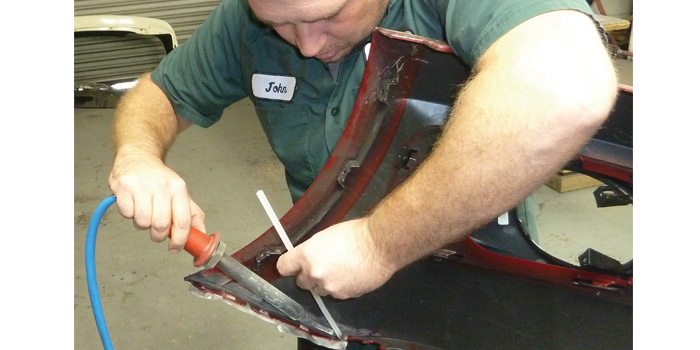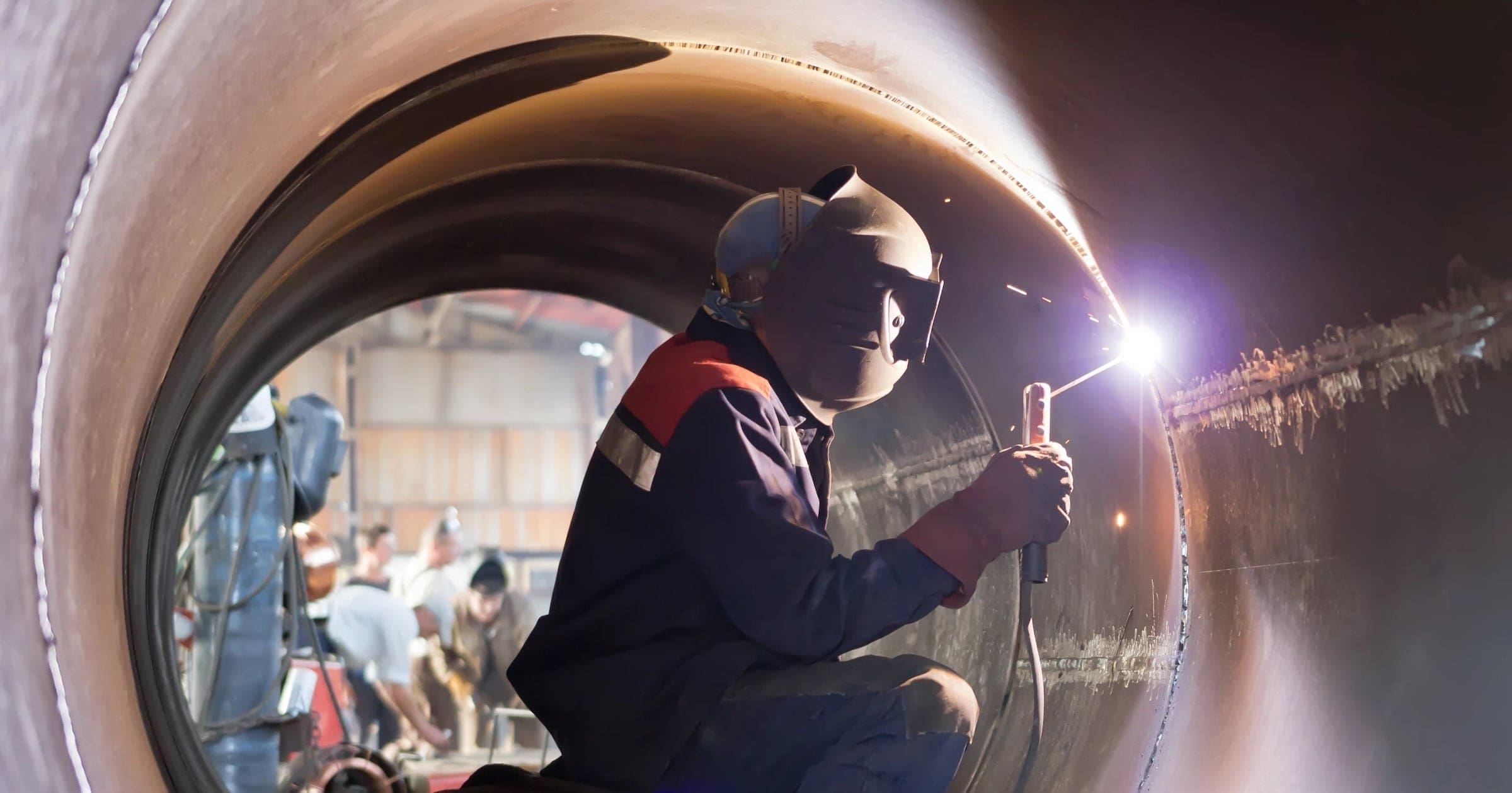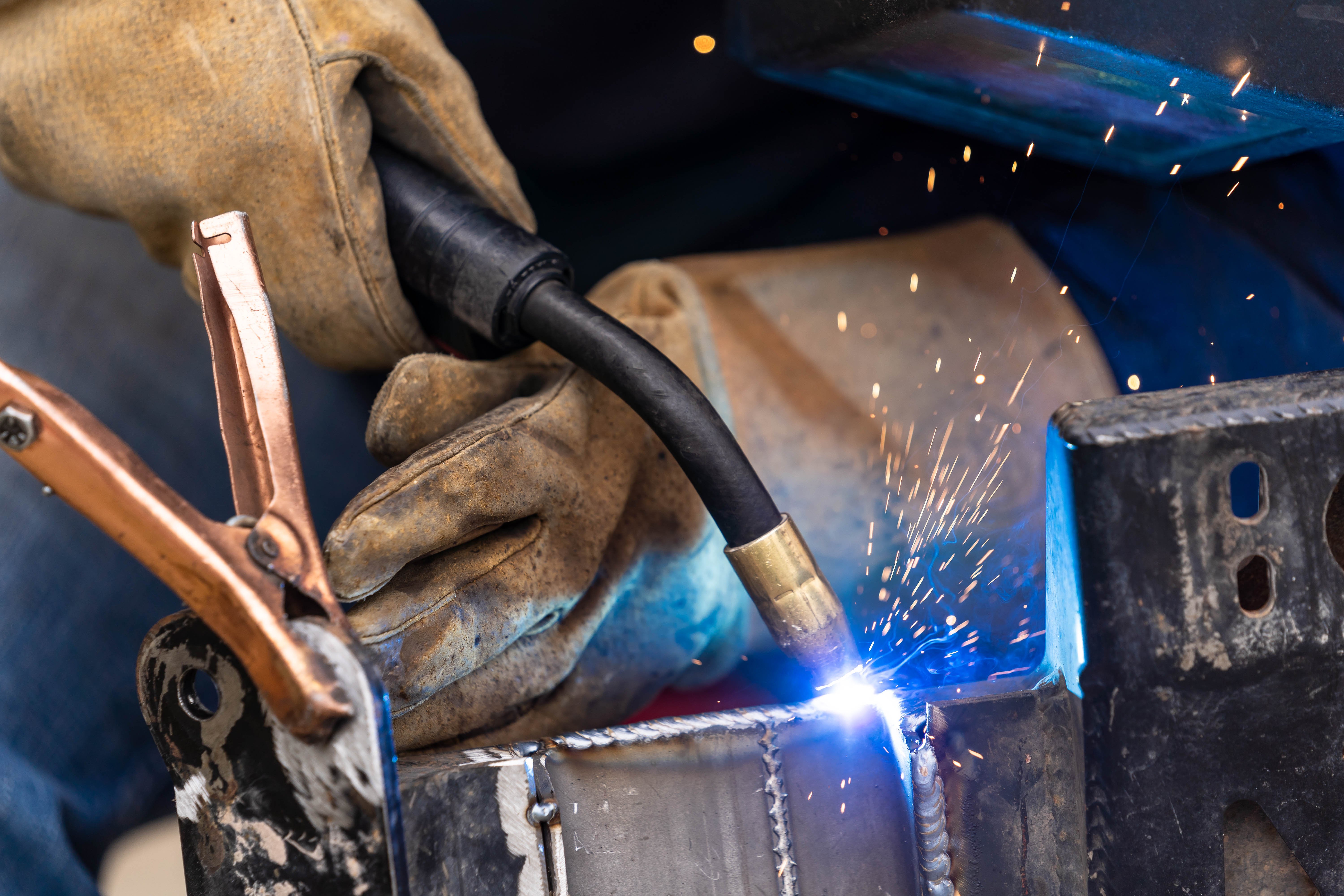Usual Welding Repair Issues and How to Address Them Efficiently
Welding repair services commonly run into a range of concerns that can jeopardize the honesty of the last product. Usual problems include insufficient penetration, porosity, and misalignment, amongst others. Each flaw provides distinct difficulties that call for particular strategies for resolution. Comprehending these issues is crucial for welders intending to boost their results and abilities. This conversation will certainly discover these usual welding fixing problems and efficient approaches to resolve them.
Poor Penetration
Inadequate penetration occurs when the weld steel stops working to totally fuse with the base product, leading to weak joints and prospective architectural failures. This concern frequently originates from insufficient warmth input, inaccurate electrode angle, or improper welding rate. Welders might run into poor penetration due to a mistake of the needed specifications for a particular product density or type. Furthermore, contamination on the base product's surface area can impede reliable bonding, intensifying the trouble. To resolve poor penetration, welders ought to guarantee suitable setups on their tools and maintain a tidy work surface. Routine assessment of welds is advised to determine any kind of shortages early, enabling for timely corrections and the prevention of endangered structural honesty in welded settings up.
Porosity
Porosity is a common problem in welded joints that manifests as tiny gas bubbles trapped within the weld metal. This issue can jeopardize the stability of the weld, leading to decreased stamina and possible failure under anxiety. Montana Mobile Welding and Repair Belgrade. Porosity generally occurs from contamination, moisture, or inappropriate welding methods, which permit gases to get away into the molten weld swimming pool. To address porosity, welders should assure correct surface area preparation, keep a clean functioning atmosphere, and make use of ideal welding specifications. In addition, choosing the appropriate filler material and shielding gas can reduce gas entrapment. Normal examination and screening of welds can aid recognize porosity early, guaranteeing timely rehabilitative actions are taken, thereby maintaining the high quality and integrity of the bonded structure
Imbalance
Misalignment in welding can occur from various variables, consisting of inappropriate setup and thermal development. Comprehending the origin is necessary for effective resolution. Numerous correction strategies are available to straighten parts and guarantee structural stability.
Root causes of Imbalance
Welding imbalance frequently originates from a range of underlying problems that can endanger architectural integrity. One main cause is improper fit-up of elements prior to welding, which can cause gaps and irregular surfaces. Variants in thermal growth throughout the welding process can also cause distortion, particularly if the products being joined have various coefficients of growth. In addition, inadequate securing and fixturing may fall short to hold parts firmly in position, leading to movement throughout welding. Badly conserved devices, including welding makers and devices, might present incongruities in the weld grain, further adding to misalignment. Operator mistake, stemming from insufficient training or experience, can additionally play a substantial function in developing misaligned welds.

Adjustment Methods Offered
Addressing imbalance successfully needs a combination of corrective techniques tailored to the specific issues at hand. One usual method is using fixtures or jigs to hold components in the appropriate position during welding, guaranteeing constant placement. Furthermore, pre-heating the products can aid decrease distortion and enhance fit-up. For substantial misalignment, mechanical adjustment strategies, such as making use of hydraulic jacks or clamps, can be used to correct the setting before welding. Post-weld heat treatment may likewise be necessary to ease anxieties brought on by misalignment. Careful evaluation and modification throughout the arrangement phase can prevent misalignment problems from coming to be significant troubles, advertising a smoother welding process and improving general architectural integrity.
Distortion
Distortion is an usual obstacle in welding that can arise from various factors, consisting of irregular cooling and heating. Recognizing the sources of distortion is crucial for executing effective prevention strategies. Addressing this problem not just improves architectural stability yet likewise improves the general quality of the weld.
Sources of Distortion
When based on the extreme heat of welding, products typically undergo modifications that can lead to distortion. This sensation mainly develops from thermal development and contraction throughout the welding process. As the weld location warms up, the material broadens; upon cooling, it contracts, which can produce inner anxieties. Additionally, irregular heating throughout a workpiece can exacerbate these anxieties, causing bending or bending. The sort of product likewise plays a substantial duty; metals with varying thermal conductivity and coefficients of expansion may react differently, resulting in unpredictable distortions. Inadequate joint style and poor fixturing can contribute to imbalance during welding, raising the likelihood of distortion. Recognizing these reasons is necessary for effective welding repair and avoidance methods.
Prevention Techniques
Efficient avoidance methods for distortion throughout welding concentrate on managing heat input and guaranteeing correct joint design. Preserving a constant warm input assists to minimize thermal expansion and tightening, which can bring about distortion. Utilizing strategies such as pre-heating the work surface can additionally minimize the temperature level slope, promoting consistent heating. Furthermore, picking suitable joint designs, such as T-joints or lap joints, can boost stability and minimize tension focus. Carrying out appropriate fixturing to secure the workpieces in area further help in preserving placement during the welding process. Lastly, staggered welding series can disperse warmth a lot more evenly, protecting against local distortion. By using these techniques, welders can significantly decrease the chance of distortion and improve the general quality of their welds.
Breaking
Breaking is a typical issue experienced in welding repair work, frequently resulting from different aspects such as improper air conditioning prices, material choice, or inadequate joint prep work. The incident of fractures can substantially compromise the honesty of the weld, causing potential failures throughout operation. To address this concern, welders have to initially evaluate the origin causes, guaranteeing that products work and appropriately chosen for the certain application. Additionally, regulating the cooling rate throughout the welding process is necessary; rapid air conditioning can induce tension and cause splitting. Proper joint style and preparation also add to reducing the threat. Implementing these strategies can boost weld high quality and longevity, inevitably decreasing the probability of fracturing in finished weldments.

Insufficient Fusion
A considerable concern in welding fixings is incomplete blend, which happens when the weld metal does not properly bond with the base product or previous weld passes - Montana Mobile Welding and Repair Belgrade Welding. This issue can cause weaknesses in the joint, possibly compromising the stability of the welded framework. Variables adding to insufficient fusion consist of not enough heat input, inappropriate welding strategy, and contamination gasless mig wire of the surfaces being signed up with. To address this issue properly, welders must ensure appropriate pre-weld cleansing and surface area prep work, in addition to readjust their welding criteria to achieve adequate infiltration and combination. Normal examination during the welding procedure can also assist identify insufficient combination early, allowing for prompt rehabilitative steps to enhance the general top quality of the weld
Overheating
While welding repairs can improve structural honesty, overheating offers a considerable obstacle that can result in material deterioration. Too much warm during welding can alter the mechanical buildings of metals, causing reduced stamina, enhanced brittleness, and warping. This sensation is particularly important in high-stress applications where structural dependability is paramount. Identifying overheating can entail visual assessments for discoloration or distortion, along with keeping track of temperature level during the welding process. To alleviate the risks related to overheating, welders must utilize appropriate techniques, such as regulating heat input, changing traveling rate, and utilizing appropriate filler products. Additionally, carrying out pre- and post-weld warm therapies can help recover material properties and enhance the total top quality of the repair service, guaranteeing long-lasting performance and security.
Regularly Asked Concerns
What Are the Usual Indications of a Welding Defect?

Exactly How Can I Check My Welds for High quality?
To evaluate welds for high quality, one can use aesthetic examinations, ultrasonic screening, and radiographic approaches. Each technique ensures architectural stability, determines flaws, and validates adherence to specified requirements, inevitably enhancing the reliability of the bonded joints.
What Security Safety Measures Should I Take While Welding?
When welding, one need to focus on safety and security by wearing ideal individual safety devices, ensuring correct air flow, securing combustible products away, preserving a tidy work space, and understanding surroundings to stop mishaps and injuries.
Can I Repair a Weld Without Redoing the Entire Joint?
Repairing a weld without redesigning the whole joint is feasible, relying on the damages (Fabrication). Techniques such as grinding, including filler material, or making use of a welding process can effectively address certain defects while maintaining the surrounding structure
What Equipment Are Vital for Reliable Welding Services?
Essential devices for efficient welding fixings consist of a welding maker, wire brush, grinder, safety equipment, clamps, and filler products. Each tool plays a crucial role in guaranteeing high quality and my explanation safety and security throughout the repair process. Porosity normally emerges from contamination, moisture, or inappropriate welding techniques, which permit gases to run away right into the molten weld pool. Improperly maintained equipment, consisting of welding machines and devices, may introduce disparities in the weld bead, more adding to misalignment. When subjected to the site intense warm of welding, products typically undertake changes that can lead to distortion. Splitting is an usual concern encountered in welding repair services, frequently resulting from various variables such as improper cooling rates, product option, or inadequate joint prep work. A substantial concern in welding repairs is incomplete fusion, which occurs when the weld steel does not sufficiently bond with the base product or previous weld passes.